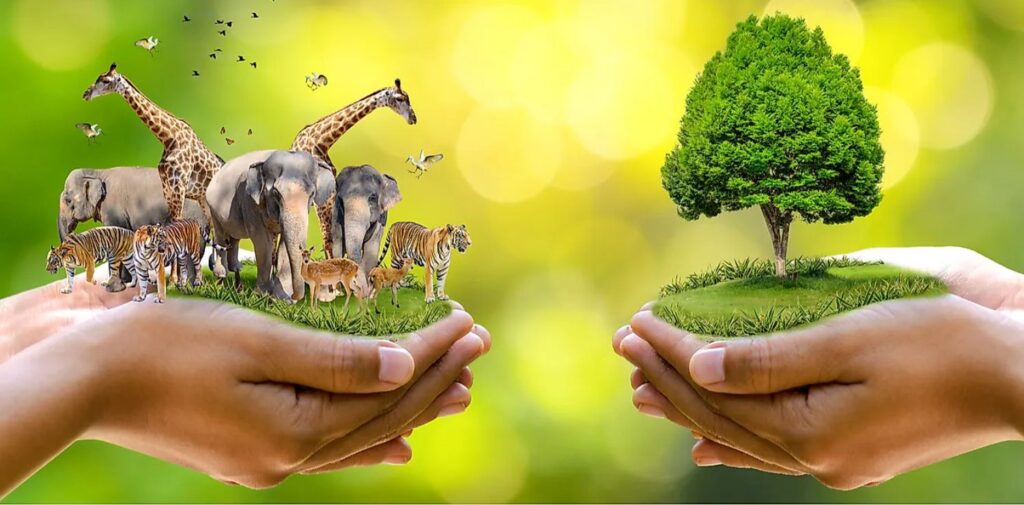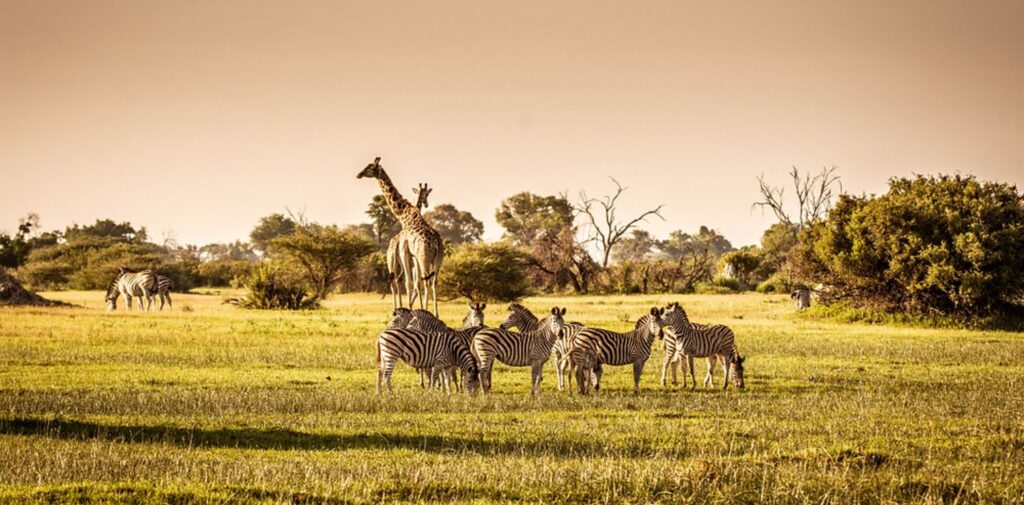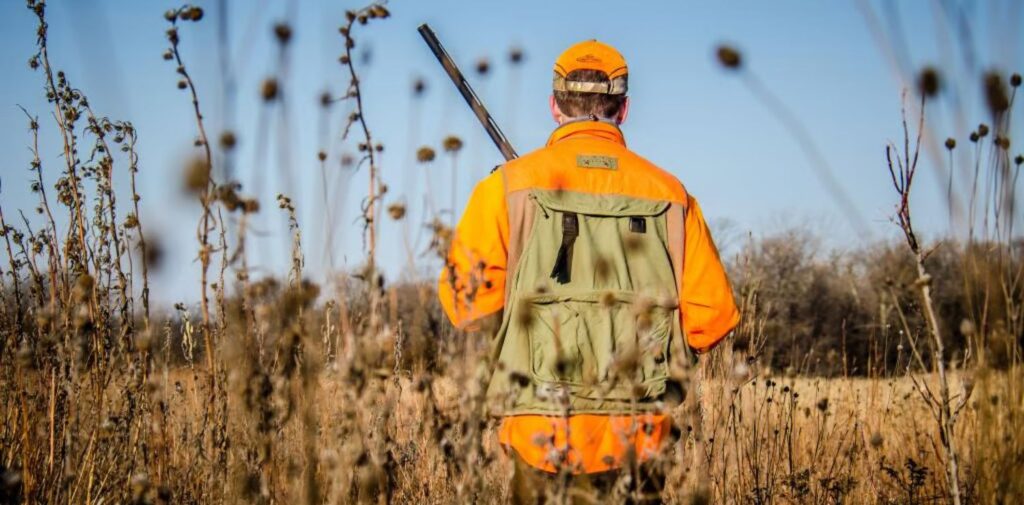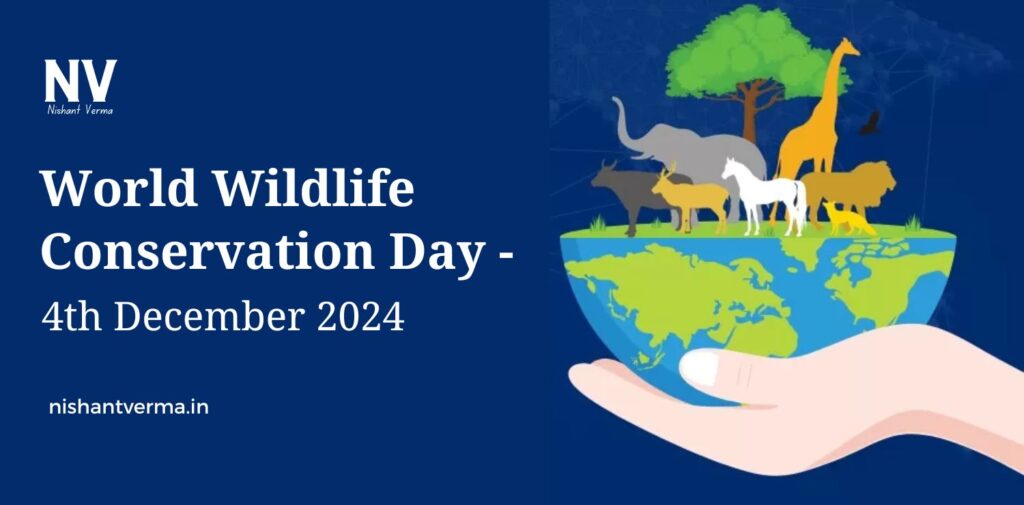Every year, on the 4th of December, the world observes World Wildlife Conservation Day. This day is dedicated to raising awareness about the importance of wildlife conservation and the urgent need to protect endangered species and their habitats. Wildlife refers to all living organisms that are not domesticated, including animals, plants, fungi, and microorganisms. Wildlife conservation aims to protect these species, ensuring that future generations can experience the beauty and benefits they bring to our planet.
The Importance of Wildlife Conservation
Wildlife plays an essential role in maintaining the balance of ecosystems. Each species, no matter how big or small, has a specific function that helps to preserve the health of the environment. For example, bees pollinate flowers, which helps plants reproduce and provides food for humans and animals. Predators, like lions and wolves, regulate the populations of other species, preventing overgrazing or the spread of disease. Even smaller creatures like insects and worms are vital for breaking down organic matter, enriching the soil, and keeping forests healthy.
However, in recent decades, wildlife around the world has been increasingly threatened. Due to human activities such as deforestation, pollution, poaching, and climate change, many species are rapidly disappearing. According to the International Union for Conservation of Nature (IUCN), nearly 28,000 species are currently listed as endangered or critically endangered. This loss not only harms biodiversity but also disrupts the delicate balance of ecosystems, which can affect agriculture, water quality, and human health.

Why We Need to Protect Wildlife
- Biodiversity: The variety of species in our ecosystems is critical for maintaining life on Earth. Every species contributes to the web of life. Losing one species can affect many others. For example, if a predator species goes extinct, its prey population may grow out of control, leading to imbalances that harm crops, forests, and other animals.
- Ecological Services: Wildlife provides essential ecological services that benefit humans. For example, forests are home to many species of birds and insects, which help maintain the ecosystem by pollinating plants, controlling pests, and recycling nutrients. Oceans are filled with marine life that contributes to regulating the climate by absorbing carbon dioxide. Without these services, human life would become increasingly difficult.
- Medicinal Value: Many plants and animals are sources of life-saving medicines. For instance, the rosy periwinkle, a flower native to Madagascar, is used to treat leukemia and lymphoma. The loss of species could mean losing valuable sources of medicine that could save countless lives in the future.
- Economic Benefits: Wildlife also contributes to the economy. Ecotourism, where people travel to see animals in their natural habitats, is a growing industry that supports local economies. Countries like Kenya, India, and Costa Rica rely on their rich wildlife to attract tourists, who spend money on safaris, tours, and related services.
- Cultural Importance: Many animals and plants hold cultural significance. In some cultures, certain species are revered as sacred, or their symbols are used in traditions and festivals. The loss of these species could diminish cultural heritage and the spiritual connections people have to nature.

Threats to Wildlife
- Habitat Destruction: One of the biggest threats to wildlife is the destruction of their natural habitats. Deforestation, urbanization, and agricultural expansion are leading to the loss of forests, grasslands, wetlands, and other ecosystems. As natural habitats disappear, animals are forced to migrate to unfamiliar areas, often resulting in conflict with humans or the inability to find food and shelter.
- Poaching and Illegal Wildlife Trade: Many animals are hunted illegally for their body parts, such as ivory, fur, horns, and skins. The illegal wildlife trade is a multibillion-dollar industry that thrives on the demand for exotic pets, traditional medicines, and luxury goods made from animals. This leads to the decline of species like elephants, rhinos, tigers, and sea turtles.
- Climate Change: The changing climate poses a major threat to wildlife. Rising temperatures, altered rainfall patterns, and extreme weather events can disrupt animal migration, breeding cycles, and food availability. Species that are unable to adapt or migrate to suitable habitats may face extinction.
- Pollution: Pollution in the air, water, and soil affects wildlife in many ways. Marine animals, like sea turtles and dolphins, are particularly vulnerable to plastic pollution in the oceans. Chemicals, pesticides, and oil spills also harm animals and plants, poisoning them or destroying their habitats.
- Invasive Species: Non-native species introduced by humans can become invasive and outcompete or prey on native species. For example, the introduction of the brown tree snake to the island of Guam has led to the extinction of several bird species. Invasive species can drastically alter ecosystems, making it difficult for native wildlife to survive.

Efforts to Conserve Wildlife
- Protected Areas: One of the most effective ways to protect wildlife is by establishing protected areas, such as national parks, wildlife reserves, and marine protected areas. These areas serve as safe havens for endangered species, where they can live and breed without the threat of human activities.
- Legal Protection: Governments and international organizations have put laws in place to protect wildlife. The Convention on International Trade in Endangered Species of Wild Fauna and Flora (CITES) is an international agreement that ensures international trade does not threaten the survival of wild animals and plants. National laws also protect species, regulating hunting, poaching, and habitat destruction.
- Conservation Organizations: Numerous organizations, like the World Wildlife Fund (WWF), Conservation International, and the Wildlife Conservation Society, work tirelessly to protect species and their habitats. These organizations conduct research, advocate for policy changes, and raise funds to support conservation projects.
- Education and Awareness: Raising awareness about the importance of wildlife conservation is key. Through campaigns, social media, and educational programs, people are encouraged to make sustainable choices, reduce their carbon footprint, and support wildlife conservation efforts. By learning more about endangered species and the threats they face, people can become motivated to take action.
- Sustainable Practices: One of the ways we can help conserve wildlife is by adopting sustainable practices. This includes reducing waste, recycling, conserving water, and supporting businesses that use sustainable methods of production. Consumers can also make informed choices by avoiding products that contribute to habitat destruction, such as palm oil and unsustainable timber.
Conclusion: World Wildlife Conservation Day
World Wildlife Conservation Day is a reminder that every living species, no matter how small, is a crucial part of our planet’s ecosystem. The conservation of wildlife is not just about saving animals; it’s about protecting the natural resources and ecosystem services that support life on Earth, including human life. As we face numerous challenges, from habitat destruction to climate change, the need for action has never been more urgent. By supporting wildlife conservation efforts, reducing our impact on the environment, and spreading awareness, we can help create a future where wildlife thrives, and the Earth remains a beautiful, biodiverse place for generations to come.
Let’s work together to ensure that our planet’s precious wildlife is conserved and protected for the benefit of all.




